This technique is shown to provide survival skills information. Check with your local fish and game regs to make sure it’s legal where you live!
A trotline is nothing more than a string of baited hooks. Using a trotline allows you to fish for food while doing something else. Here is how to improvise one from paracord.
by Leon Pantenburg
Statistics show most lost people are found within 24 hours if they stay put. Your priorities, if lost, should be water, shelter and fire, and preparing to signal rescuers.
But time is a precious commodity during a long-term situation, and prioritizing activities will be critical. If you can make a fish trap or place a trot line, these methods can gather food while you’re doing something else.
A trotline is a mainline with smaller, baited hooks attached. A weight is attached to one end, the other end is secured to a branch or rock on the shore and the baited setup is tossed into a likely hole or deep spot in the water.
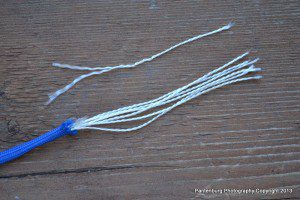
550 paracord has seven filaments of nylon thread in a plastic sleeve. Each filament is about 30-pound test and can work in a pinch as fishing line.
On my end-to-end canoe voyage of the Mississippi River, I saw many trotlines, and variations of this basic setup. Like anything associated with fishing, knowledge is more important that equipment.
Here is how to improvise a survival trotline out of a piece of paracord. This setup will work well, provided you have the right bait and know where to fish.
You’ll need:
- Paracord: the kind with the seven strands enclosed in the plastic sheath. Get the good stuff.
- Hooks: Size will depend on what kind of fish you are attempting to catch. Again, this is an illegal technique in many areas. But during a survival situation where you really need food, anything goes.
- Swivels: These are handy for attaching the strands to the mainline loops, but are not absolutely necessary. In a pinch, you could tie the lines with hooks directly to the main line. Or, you could substitute an aluminum can poptop for the swivel.
- Knowledge: Practice these knots before you need them. Click on the video to learn the knots step-by-step.
- A rock or weight for the end that goes in the deep end.
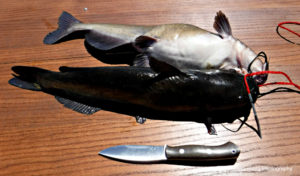
Trotlines can be productive in the right locations. Make sure to check the local fishing regulations to see if using trotlines is legal!
Then:
- Tie a series of non-sliding loop knots in the main line.
- Cut off a piece of paracord, about 24 inches or so long, and remove the strands. This becomes your connector between the mainline and the hook .
- Tie the fishing line to the loops.
- Tie a hook to the fishing line and bait it.
- Tie a rock or weight to the end.
- Toss the weighed end into a promising-looking pool.
- Tie the other end to a tree, branch or large object on the shore.
The trotline can be baited and the fish removed as needed. If you don’t catch anything, either the fish aren’t there or don’t like the bait. Experiment with a variety of baits on the line to find the favorite. If you don’t know where to put the trot line, start by finding a deep hole, preferably with some water moving through it.
Once you find a productive spot, stay with it. Check your line and re-bait as needed in the morning and evening and your fishing will be quick and effective.
Please click here to check out and subscribe to the SurvivalCommonSense.com YouTube channel – thanks!
Watch the video to see how to bait your hooks for catfish!

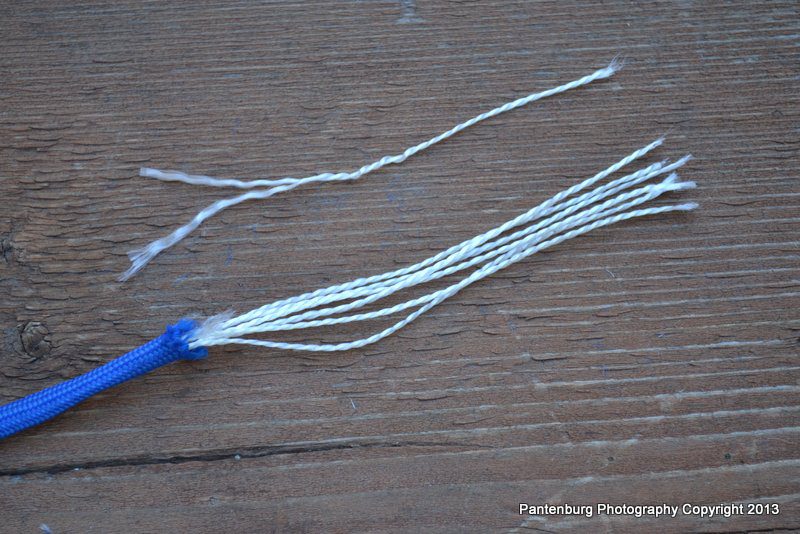
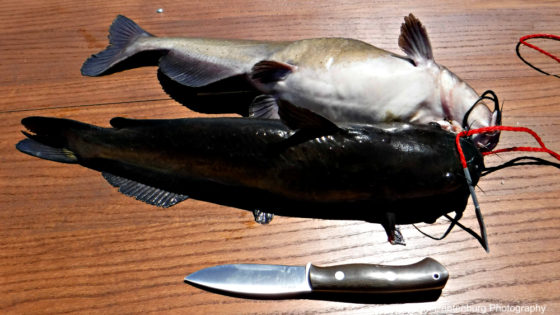
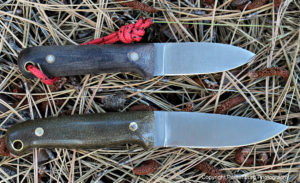

Leave a Reply